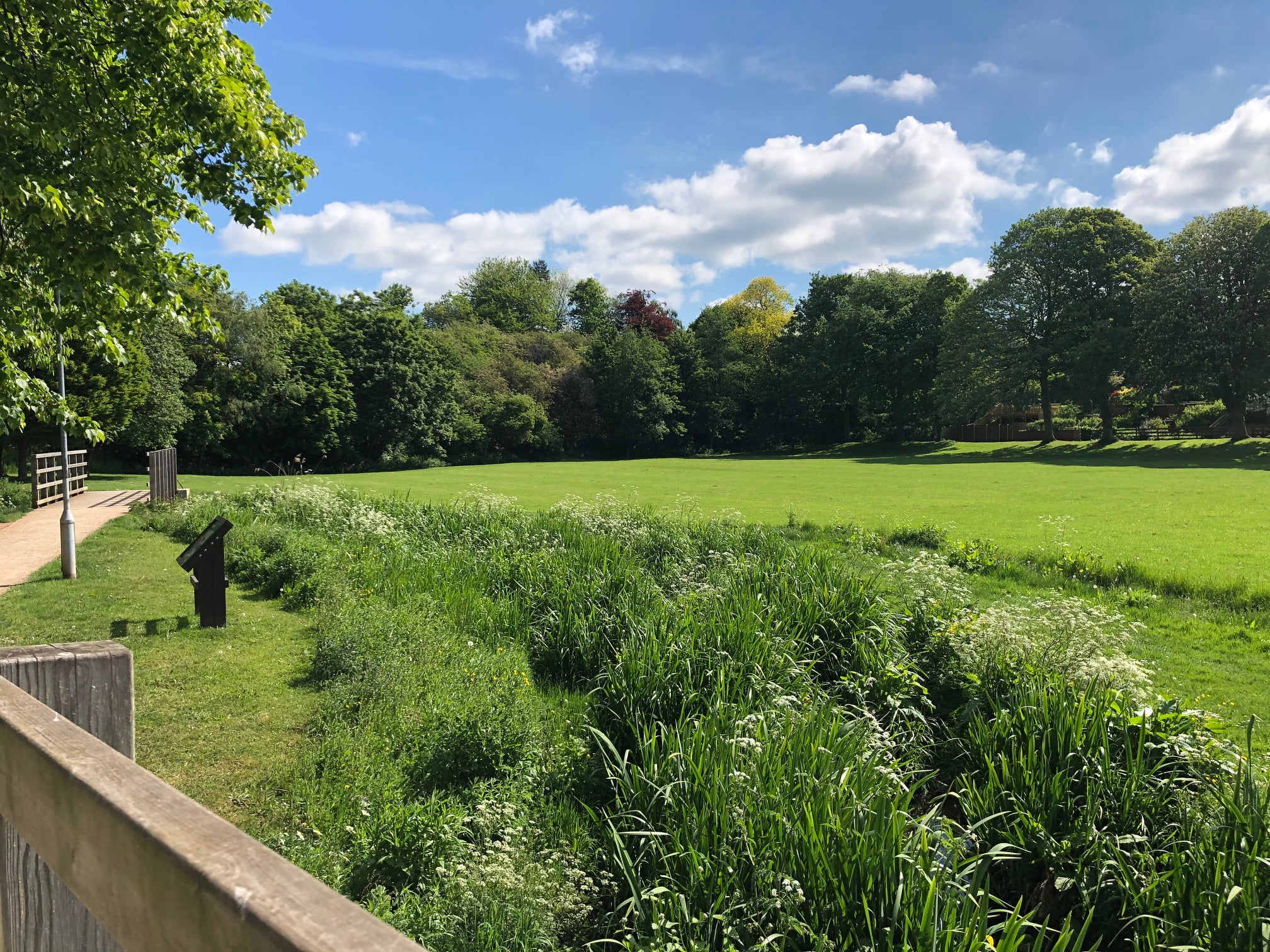
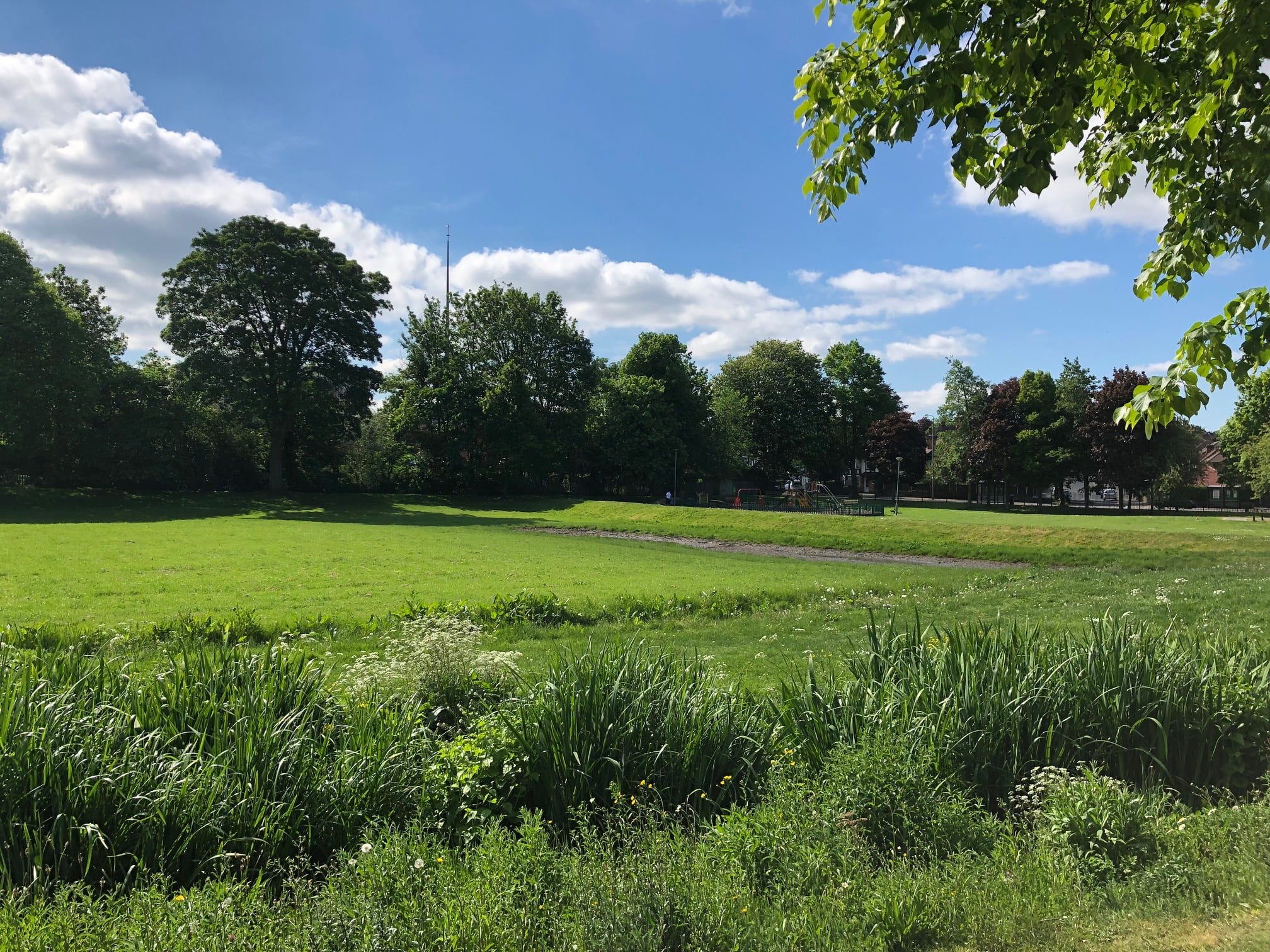
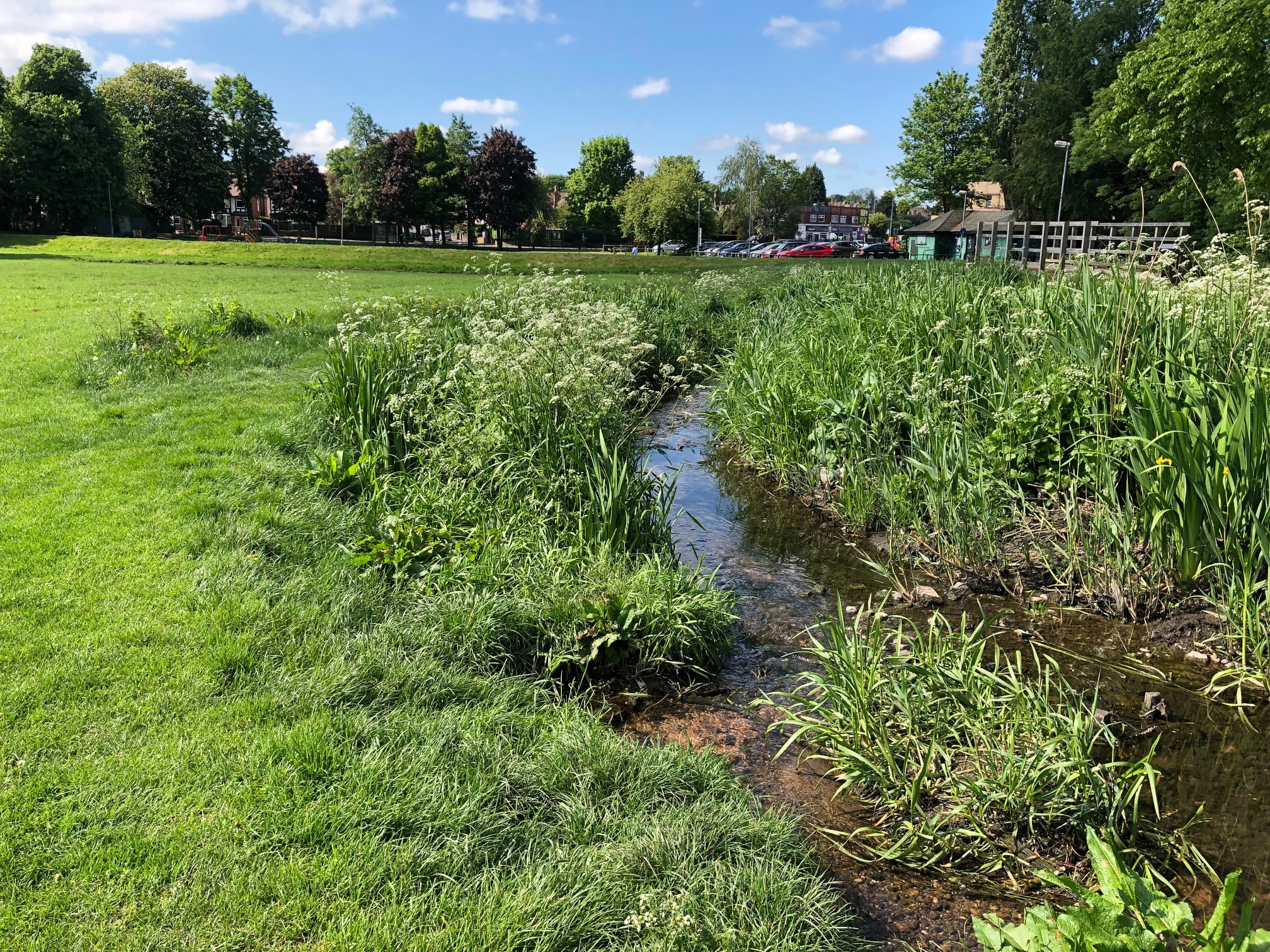
ROLE: Lead Partner, Landscape Architects from conception to completion
LOCATIONS: Thackeray’s Lane Recreation Ground, Gedling, Nottinghamshire
CLIENT: The Environment Agency
Background & Objectives:
Through a partnership of the Environment Agency, Gedling Borough Council, Nottingham City Council, Severn Trent Water and Groundwork as Lead, the aim of the project was to deliver measures which begin to restore the Day Brook catchment. Through brook restoration and SuDS treatment trains the scheme sought to improve the health of the Day Brook as it flows out of Gedling and reduce flood risk for Nottingham City and Gedling Borough residents within the catchment. Alongside this outcome, the scheme also aimed to raise awareness in the local community of sources of urban diffuse pollution and ultimately bring about behavioural change.
The Day Brook is a main river flowing from its upper reaches in Gedling Borough into Nottingham where it connects into the River Leen. The brook is classified as poor WFD status with many culverted sections and highly modified canalised channels, in its upper reaches the brook is serviced by a highly populated surface water sewerage system feeding from industrial, residential and highways areas.
Design Solution
We created a design to re naturalise the Day Brook by diverting the water course into a meandering new channel through Thackeray’s Lane recreation ground, bringing the river into the park from its hidden and canalised location alongside the boundary of the park. The river was reconnected with the park allowing it to flood as a natural flood plain with an earth bund structure created to control the extent of flooding and incorporating a slow release function to allow cleaner water to eventually flow back into the Day Brook following flood events. The new river channel incorporates areas of wetland planting to reduce pollutants and increase biodiversity, it has riffles and stony outcrops and is of differing widths to create fast and slow sections, increase oxygenation and providing different habitats for micro-organisms and invertebrates.
Impact
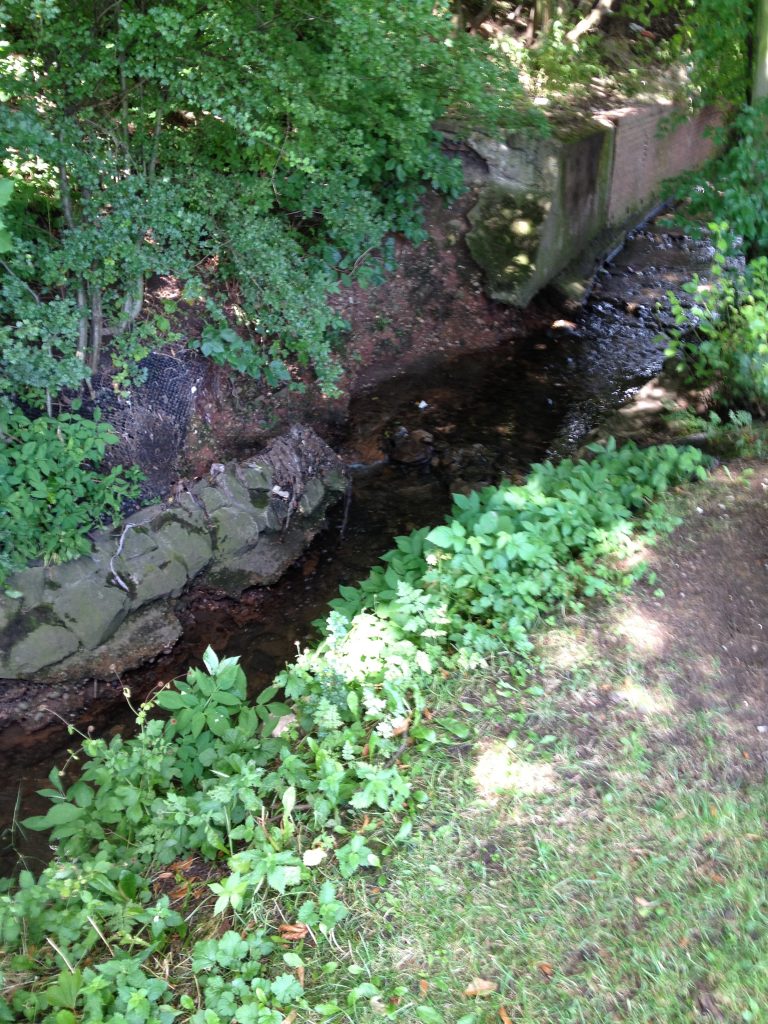
Before
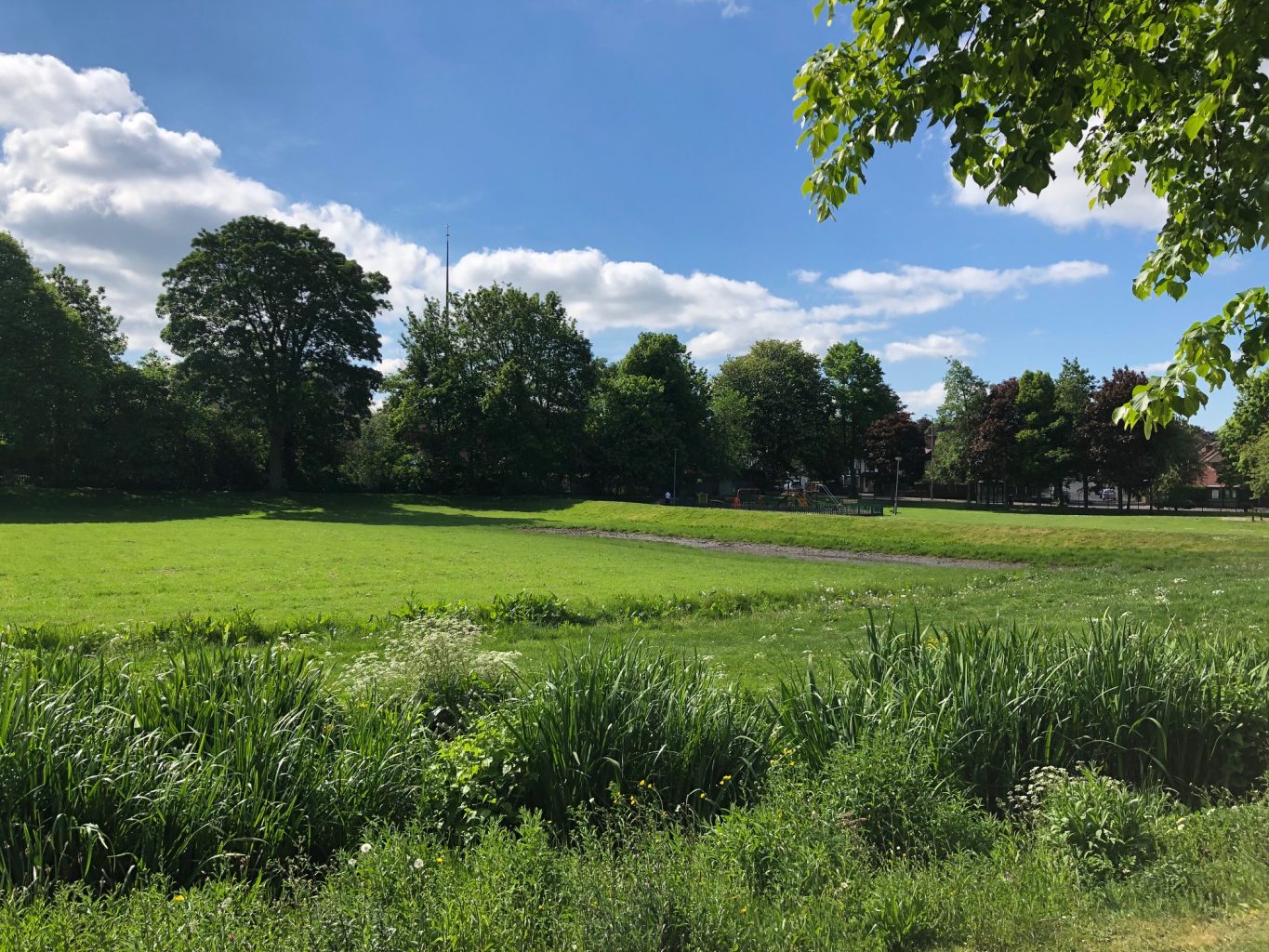
After
The scheme has resulted in a healthier, ecologically diverse watercourse which is able to mitigate the effects of diffuse pollution. The reconnection to floodplain now allows the playing field to flood in times of high rainfall, in a controlled and contained manner. This in turn has reduced flooding to properties downstream and in the immediate vicinity.
Additionally the scheme has greatly enhanced the amenity value of the park, and reconnected people to the Brook, new habitats and wildlife via a new footpath with bridges over the watercourse. Interpretation on site provides awareness of the value of a natural SuDS scheme to river health and informs users of the causes of diffuse pollution and measures they can take to prevent this at source.
Jo Phelan
Principal Landscape Architect
East Midlands Team
